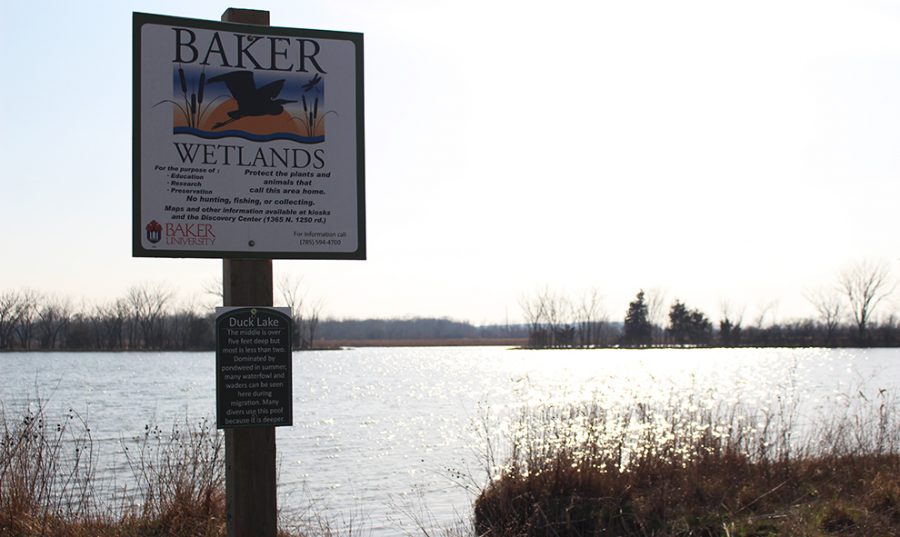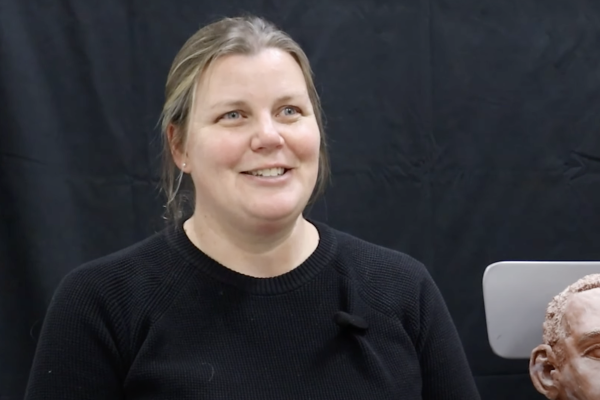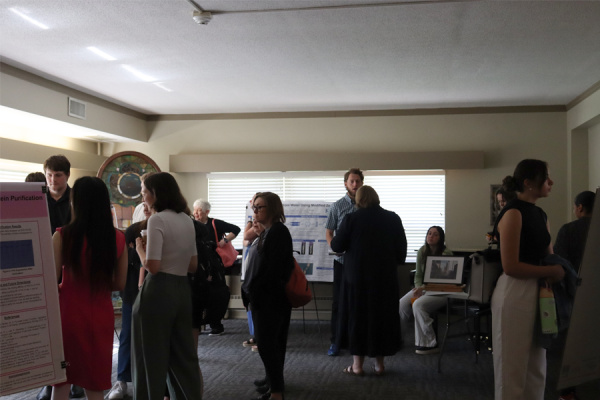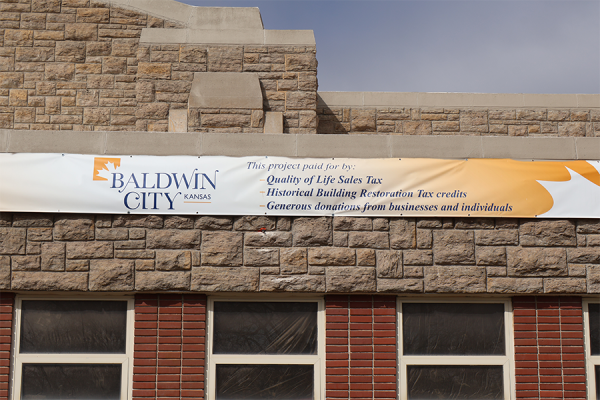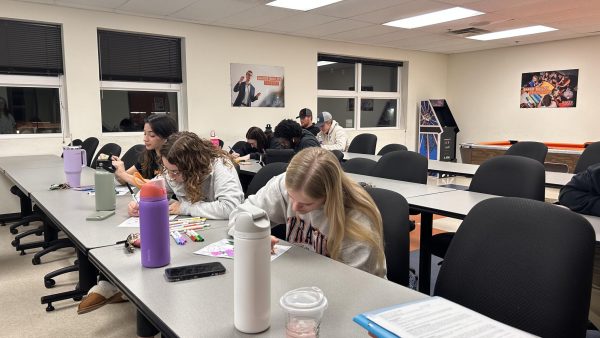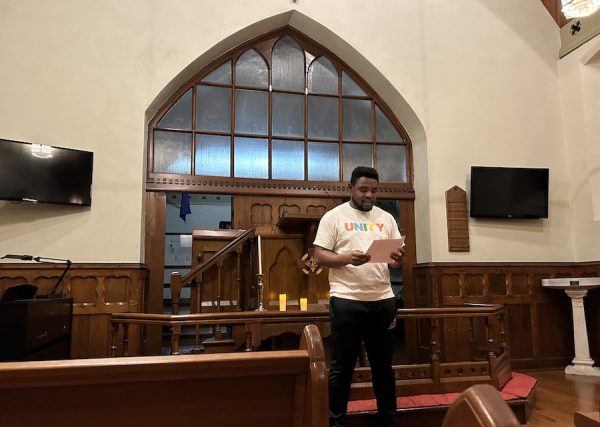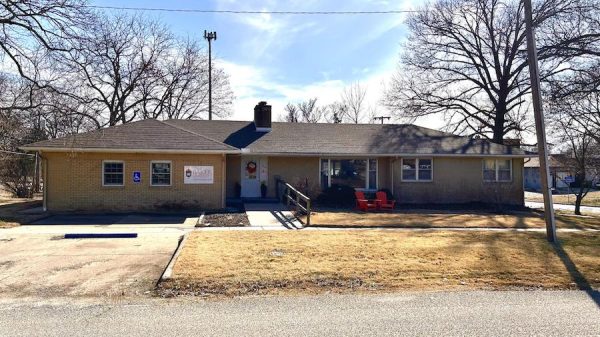Baker Wetlands: A National Nature Landmark
Duck Lake is one of many lakes in the 927 acres of land that is called the Baker Wetlands. There are hundreds of plant and bird species that can be found at the Baker Wetlands throughout the year.
April 9, 2018
The Baker Wetlands is one of the remarkable natural spots found in Kansas. In just a short visit, I was able to see the diverse natural beauty this nature preservation landmark has to offer. A flock of birds resting in one of the swales which I’m fairly sure were Franklin Gulls, based on a brochure, birds perched on the birdhouses and rabbits running in the thicket off the trail.
The 11 miles of trails and large amounts of wildlife attract many people, including walkers, photographers and bird watchers.
Baker University acquired the original 573 acres of land from the U.S. Department of Health, Education and Welfare in 1968. The size of the Baker Wetlands increased to 927 acres when the Kansas Department of Transportation purchased additional land to add to the Wetlands as a resolution to the 56 acres they needed to build the South Lawrence Trafficway.
The additional 410 acres purchased by KDOT was then extensively restored to add this land to the existing Wetlands by Baker University. This included building pools and swales to retain water, seeding the new land and creating methods of water control.
The restoration project was led by Roger Boyd, the current senior scientist at the Wetlands and professor emeritus of biology.
The Baker Wetlands was distinguished as a National Nature Landmark by the National Park Service in 1969. It is one of only five National Nature Landmarks in Kansas. There are 599 National Natural Landmarks in the United States as of November 2016.
According to the National Park Service, National Natural Landmarks are selected “for their condition, illustrative character, rarity, diversity and value to science and education.” Any land site can be a National Natural Landmark like the Baker Wetlands, which is privately owned, even if it is publicly owned. The purpose of the National Nature Landmark program is to recognize and promote “conservation of sites that contain outstanding biological and geological resources.”
So far, 278 species of birds, 98 other vertebrate species and 487 plant species have been identified at the Baker Wetlands.
The Wetlands also hosts various community events. For example, a recent Carsten Meier exhibit included his sculpture called “Zirkel No. 1”.
Meier is a photographer who won the National Juried Art Show at the Baker Wetlands in 2017. The sculpture is made from willow trees that will grow into the circular shape they were planted and intertwined in. The sculpture can be seen at the Wetlands in Tract B along the Diagonal Trail.



